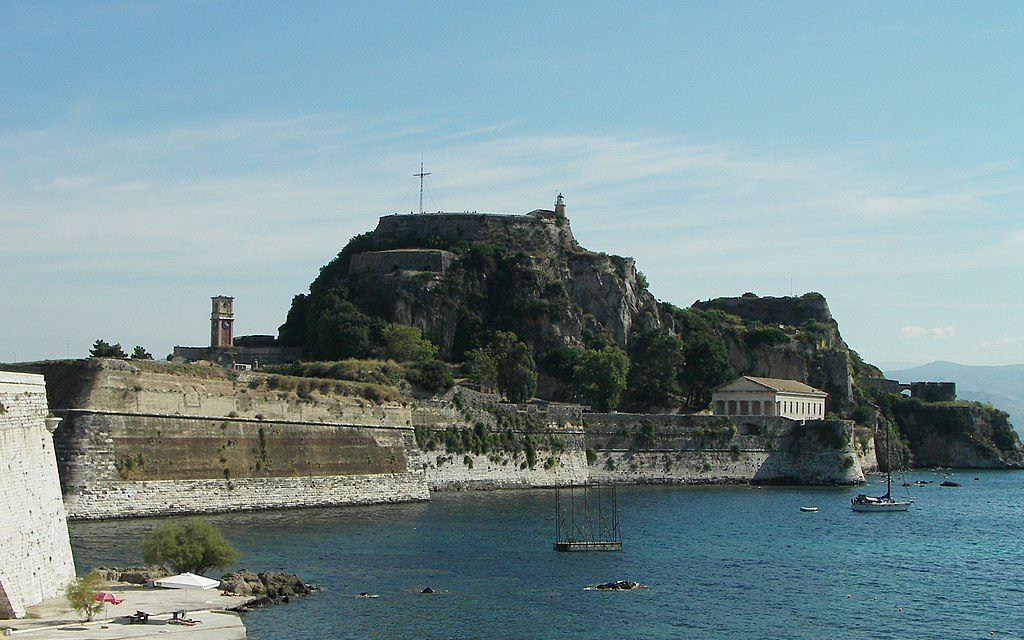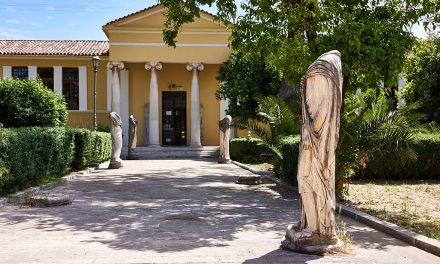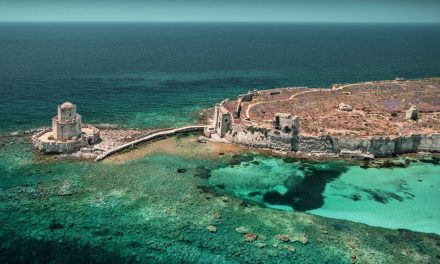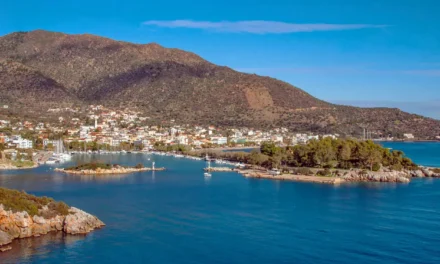Corfu (Kerkyra in Greek) is the capital of the Ionian Islands and occupies a strategic position at the entrance to the Adriatic Sea. Its historic centre, usually referred to as the Old Town, dates back to the 8th century BC. The city is located on the eastern side of the island, overlooking the coasts of Greece and Albania, and its fortresses, designed by renowned Venetian engineers, served as strongholds of the Republic of Venice against the Ottoman Empire for over four centuries. Most of the buildings in the historic centre are in the neoclassical style, with many dating to the Venetian period and many others to most recent periods, especially the 19th century. The Old Town of Corfu was inscribed in the UNESCO World Heritage List in 2007.
The history of Corfu
The earliest reference to Corfu is the Mycenaean Greek word ko-ro-ku-ra-i-jo (“inhabitant of Korkyra”) written in Linear B syllabic script, c. 1300 BC. Many scholars identify it with the Homeric island of Scheria, the home of the Phaeacians as described in the Odyssey. In the archaic period, it was colonised by Corinthians. During the Roman rule of Greece, the island served as a naval station. Due to Ostrogoth raids in the early Byzantine period, the main settlement was moved to the north, where the rocky hills offered natural protection against raids. The ruins of this ancient settlement can still be found today at the archaeological site called Palaiopoli, meaning “old city”.
The medieval city and, by extension, the island, owes its Western name to its location: Corfu is a corruption of Korypho, from the Greek word koryphi meaning “(mountain/hill) peak”, due to the two peaks where the Venetian castles now stand. From the early 9th century, Corfu and the other Ionian Islands formed part of the theme of Cephallenia. In the 10th century, the island was subject to Saracen attacks and, later, Norman invasions. The island’s rulers changed several times in the following years, until it voluntarily came under the control of the Republic of Venice in 1386.
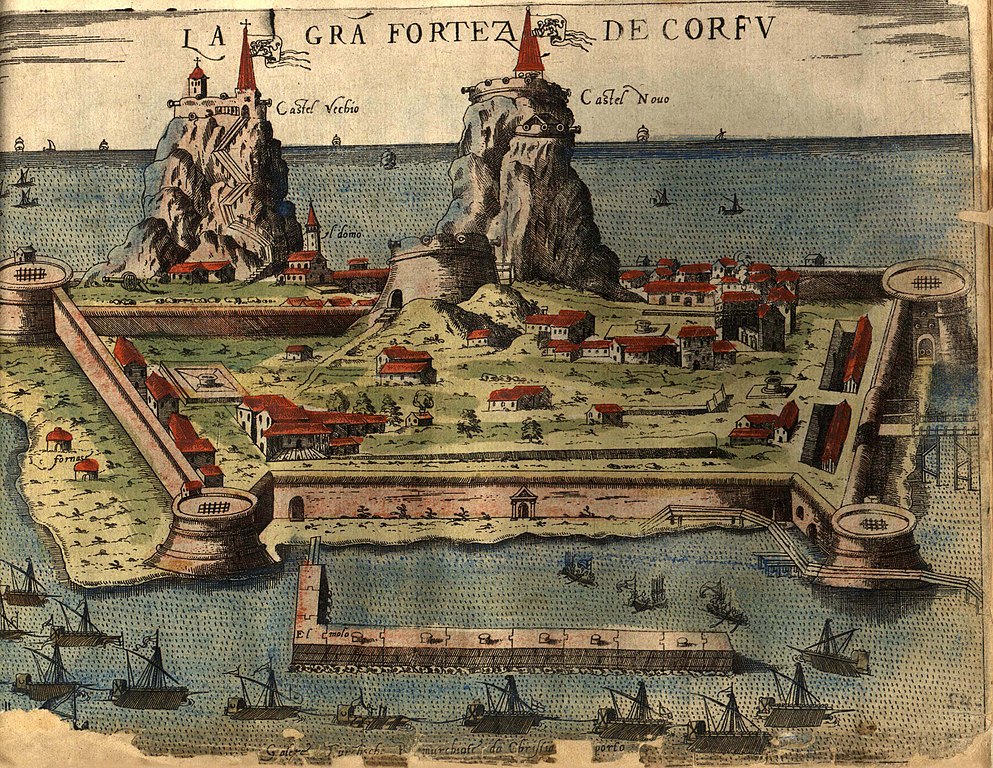 The Old Fortress of Corfu by Simon Pinargenti, 1573 (via Wikimedia Commons)
The Old Fortress of Corfu by Simon Pinargenti, 1573 (via Wikimedia Commons)
For four centuries, Corfu formed part of the Venetian Ionian Islands, an overseas possession of the Republic of Venice. Following the Fall of the Republic of Venice at the hands of Bonaparte in May 1797, the Ionian Islands came under the possession of the French Republic. After the end of French rule, the Ionian Islands were intended to form an independent state, but were eventually reorganised in 1800 as a Russo-Ottoman protectorate, called the Republic of the Seven United Islands (usually referred to as the Septinsular Republic). Following a second brief occupation by the French, Great Britain obtained a protectorate over the islands, and established the United States of the Ionian Islands in 1815. Corfu was the capital of both the Septinsular Republic and its successor state. In 1864, the Ionian Islands were finally annexed to Greece.
Among the most important figures born in Corfu were Governor Ioannis Kapodistrias (1776-1831), the first head of state of Modern Greece, Nikolaos Mantzaros (1795-1872), composer of the Greek national anthem, Spyridon Samaras (1861-1917), composer of the Olympic Anthem, Georgios Theotokis (1844-1916), four-time Prime Minister of Greece and Konstantinos Theotokis (1872-1923), one of the most significant Greek novelists.
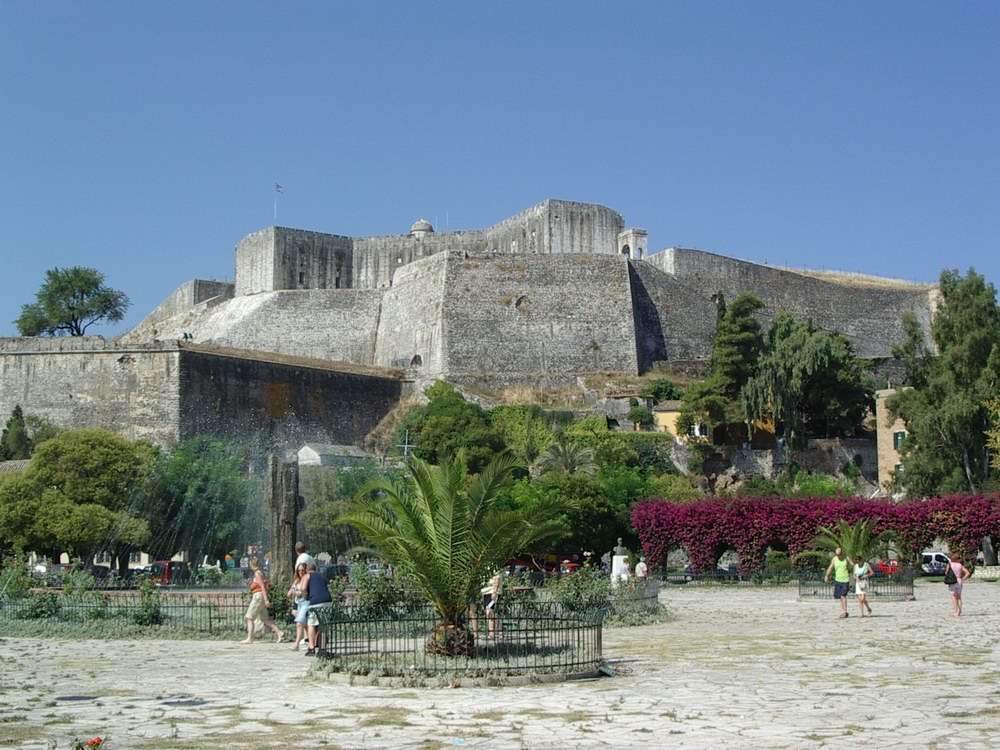 The New Fortress of Corfu (by Florival fr via Wikimedia Commons)
The New Fortress of Corfu (by Florival fr via Wikimedia Commons)
The present state of Corfu’s Old Town
The Old Fortress stands on the site were the medieval town of Corfu was founded, following the older settlement’s destruction by the Ostrogoths. The oldest parts of the fortifications date from the 6th century; these were renewed by the Byzantines and then replaced by new ones by the Venetians. The latter also separated the promontory, where the fortress is situated, from the rest of the city by creating the Contrafossa, a moat connecting the Gulf of Kerkyra to the North with the Bay of Garitsa to the South, converting the citadel into an artificial island. The Fortress now houses the Public library of Corfu which is located in the old British barracks.
The New Fortress was built by the Venetians following the first great Ottoman siege of Corfu in 1537, in order to strengthen the defences of the wider town lying outside the walls of the old citadel. They razed about 2,000 houses and replaced them with fortifications, and built the New Fortress on the hill of St. Mark at some point in the late 16th (or early 17th) century.
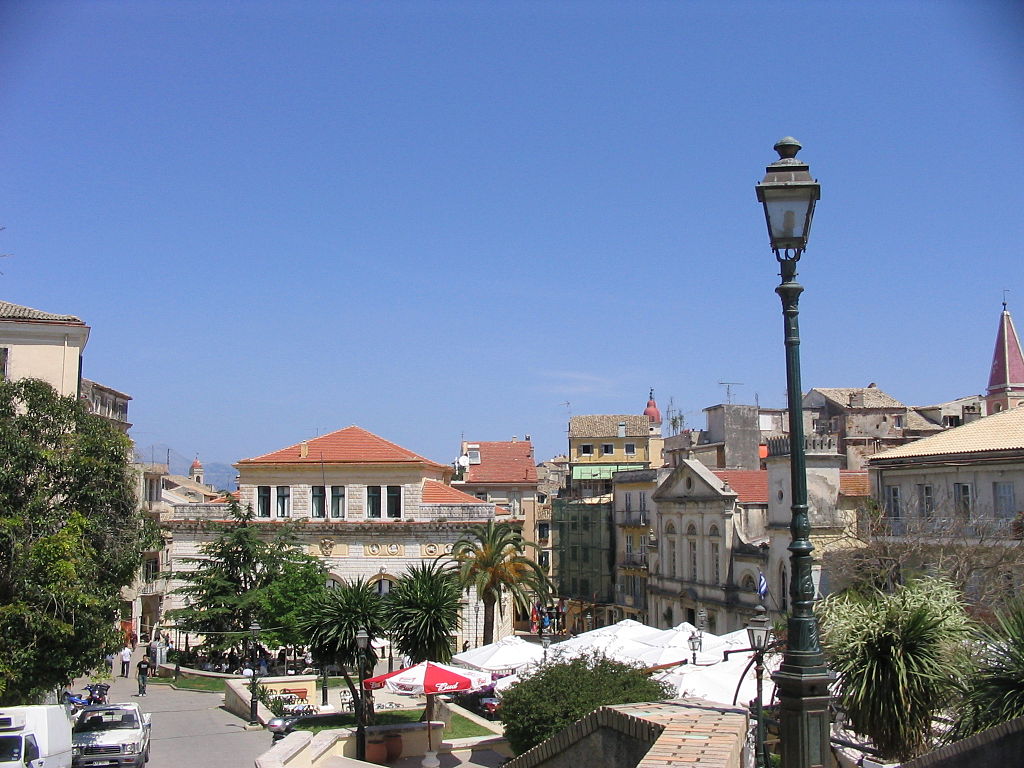 Corfu Dimarchio (Town Hall) square (by Fusslkopp via Wikimedia Commons)
Corfu Dimarchio (Town Hall) square (by Fusslkopp via Wikimedia Commons)
The town’s oldest neighbourhood is called is called Campiello, which is the Venetian term for a small square in a city area with many narrow streets. The centre of Corfu’s Old Town (and especially Campiello) is in fact famous for its narrow, cobbles streets, usually only for pedestrian use; unlike many other parts of Greece, where these small streets are called sokakia (from the Turkis sokak “street, alley”), in Corfu and the rest of the Ionian Islands they are called kantounia, from the Venetian word canton, meaning street corner. Campiello was the first settlement built outside of the Old Fortress.
One of Corfu’s most renowned attractions is the Spianada, the largest city square in Greece, situated between the Old Fortress and the Old Town. Its name comes from the Venetian word for “open flat area”. On one side of the square you will find the famous arcaded terraces of Liston, built in 1807 by the French imperial commissioner Mathieu de Lesseps. The Liston, which houses fashionable cafes, takes its name from the Venetian word for the long marble slabs used for paving the streets, also often used to indicate city squares.
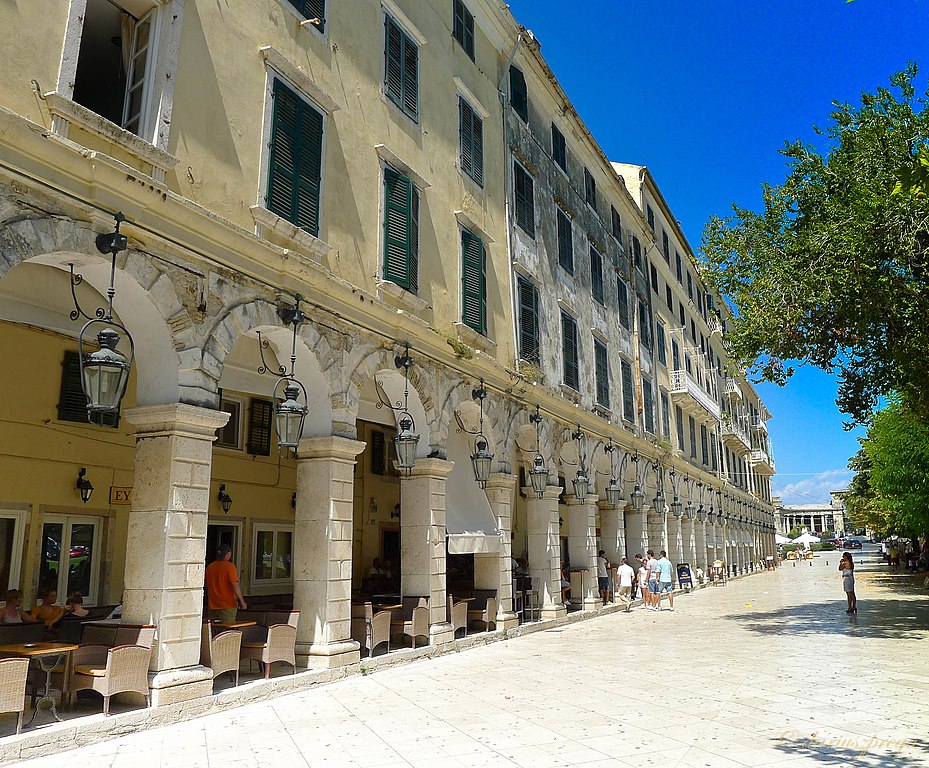 The Liston arcaded terraces (by DARIUSzpre via Wikimedia Commons)
The Liston arcaded terraces (by DARIUSzpre via Wikimedia Commons)
Following Corfu’s annexation to Greece, its fortresses were disarmed and the sea defences of the New Fortress were destroyed by the British. The general layout of the fortifications has been preserved and retains traces of the Venetian occupation –including the Old Citadel and the New Fort– but primarily of British-era alterations. The present form of the complex is the result of works dating from the 19th and 20th centuries.
In 1943, many buildings of the historic centre were destroyed by a Nazi bomb raid; the damages were particularly extensive in the Jewish quarter. The Ionian Academy, the Municipal Theatre, the Municipal Library, and the Ionian Parliament were among the historic buildings completely ruined during the raid, along with fourteen churches and several buildings of the Old Citadel.
The Old Town of Corfu has been on the UNESCO World Heritage List since 2007; in its site, UNESCO states that “the urban and port ensemble of Corfu constitutes an architectural example of outstanding universal value in both its authenticity and its integrity”, and points out that “Corfu has its own specific identity, which is reflected in the design of its fortification system”.
Read also via Greek News Agenda: Ioannis Kapodistrias, Modern Greece’s first head of state; BOOK OF THE MONTH: “Slaves in their Chains” by Konstantinos Theotokis; The medieval city of Rhodes; Kastellorizo: Greece’s remotest island; The castles of Methoni and Koroni; The medieval ghost town of Mystras
N.M. (Partly based on an article originally published on Grèce Hebdo; Intro image: The Old Fortress of Corfu [by Dr.K. via Wikimedia Commons])

